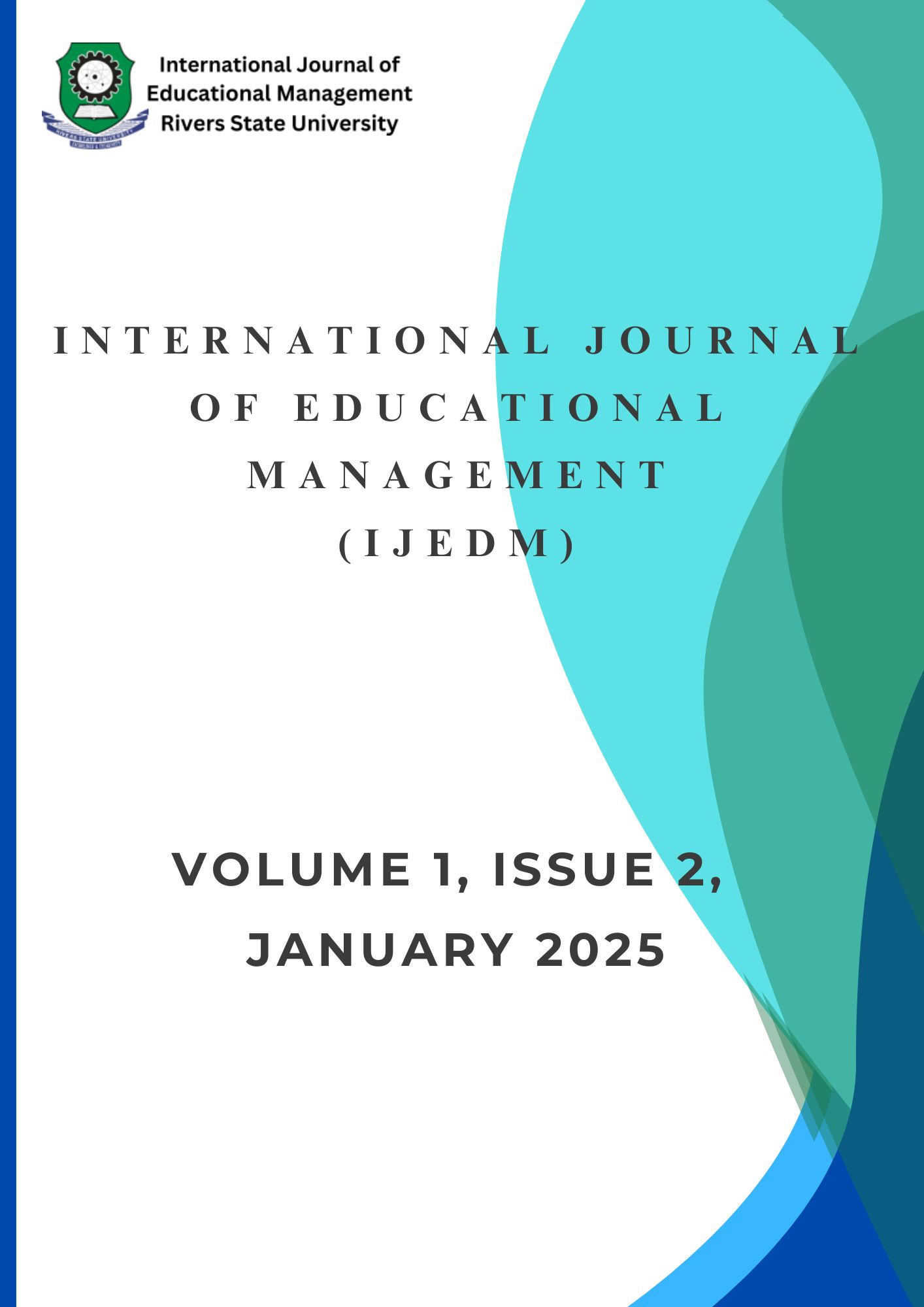Educational Waste Audit and Reduction Plans for Sustainable Utilization of Instructional Facilities in Public Secondary Schools in Rivers State
Main Article Content
Abstract
The study examined Educational Waste Audit and Reduction Plans for Sustainable Utilization of Instructional Facilities in Public Secondary Schools in Rivers State. Two research questions and two hypotheses were answered and tested in the study respectively. The design for the study was the analytic descriptive survey. The population comprised all the 268 public senior secondary schools in Rivers State with 268 principals (218 males and 50 females) from which a sample of 215 male and female principals, selected using the purposeful proportionate and stratified random sampling technique. Respondents of the study responded to a 21 – item instrument titled “Educational Waste Audit and Reduction Plans for Sustainable Utilization of Instructional Facilities Scale (EWARPSUIFS), designed by the researchers in the modified 4-point Likert Scale Module of Very High Extent (VHE), High Extent (HE), Low Extent (LE) and Very Low Extent (VLE), with a reliability index of 0.85, obtained using Cronbach Alpha Model. In all, 218 copies of the questionnaire were administered to the respondents in their various schools, 217 (99%) were retrieved, while 215 (99%) survived after coding and were used in the statistical procedures. Mean and Standard deviation were used in answering the research questions while z-test was used in testing the hypotheses at 0.05 level of statistical significance. The results of the study show that educational waste audit and reduction plans enhance the sustainable utilization of instructional facilities in secondary schools in Rivers State to a high extent. The study also established no significant difference between the mean ratings of male and female principals on the extent to which educational waste audit and reduction plans enhance the sustainable utilization of instructional facilities in secondary schools in Rivers State. The study concluded that waste audit and reduction plans are viable strategies for effectively enhancing sustainable utilization of instructional facilities in secondary education. Consequently, it was recommended that school leaders and other stakeholders should continue to conduct educational waste audits and apply good reduction plans in managing school facilities for sustainable utilization.

